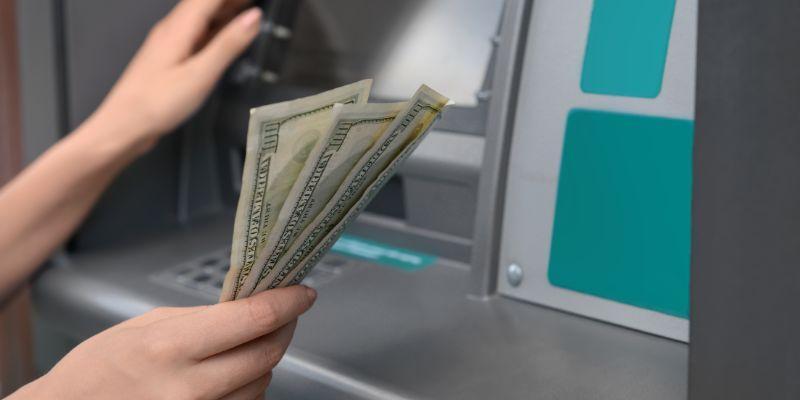The quick-service restaurant (QSR) sector is one of the food industry’s most active and fast-paced segments. Known for delivering meals quickly and affordably, QSRs have become a cornerstone of everyday dining.
With a constant demand for speed and convenience, quick-service restaurants serve millions of customers daily across the globe. Over the years, technological advancements and shifting consumer preferences have led to new trends reshaping the industry.
Understanding these QSR industry trends is essential for operators and stakeholders who want to stay ahead in this competitive market.
By keeping up with these emerging innovations, businesses can add to their operations, increase customer satisfaction, and drive sustainable growth.
The QSR market will continue to evolve in 2024, with a strong focus on technology, personalization, sustainability, and automation. Let’s explore some of today’s industry’s most influential quick-service restaurant trends.
Modern Technological QSR Trends
Technology has been a game changer in the quick-service restaurant world. New tools are streamlining operations, improving customer experiences, and boosting revenue. Here are some of the top tech-driven trends transforming QSRs in 2024.
1. Contactless Ordering and Payment

One of the most significant trends in the QSR sector is the widespread adoption of contactless ordering and payment. This system allows customers to browse menus, place orders, and pay without physically interacting with staff.
Contactless methods include mobile apps, QR codes, and digital payment systems such as Apple Pay and Google Pay.
The demand for contactless options surged during the COVID-19 pandemic, and this trend shows no signs of slowing down.
Quick-service restaurants can offer a safer and more efficient dining experience by reducing physical contact. Customers now expect to be able to pay quickly and easily with their smartphones, credit cards, or even smartwatches.
For QSR operators, adopting contactless payment systems improves speed and reduces errors, as digital orders are typically more accurate. The convenience and safety of contactless payment are significant reasons why it is becoming a permanent fixture in the QSR industry.
2. AI-Powered Personalization
Artificial intelligence (AI) is rapidly gaining ground in the quick-service restaurant industry. One key use is to provide personalized customer experiences.
By analyzing customer data, including order history, preferences, and even browsing behavior, AI can recommend menu items tailored to each customer.
For example, if a customer frequently orders a particular coffee or sandwich, AI-driven systems can suggest similar items or promotional offers based on their preferences. This boosts the customer experience, increases the likelihood of repeat orders, and builds loyalty.
Furthermore, AI can help improve order accuracy by predicting what customers want to add based on their past behavior. This level of personalization keeps customers engaged and helps QSRs stand out in a competitive market.
3. Mobile Ordering and Loyalty Apps
Mobile ordering has become a staple in the QSR sector. It allows customers to place orders ahead of time and pick up their food without waiting in line.
Mobile apps simplify the ordering process and make it more personalized. Customers can save their favorite orders, access exclusive deals, and receive tailored offers based on their preferences.
Integrating loyalty programs into mobile apps is another powerful tool for driving repeat business. These apps track customer visits and offer rewards such as free items or discounts after a certain number of purchases.
Loyalty apps forward a strong connection between customers and restaurants, encouraging them to return more frequently.
Many QSR brands have already seen great success by investing in mobile ordering platforms and loyalty apps. These digital tools are essential for keeping up with the modern customer’s expectations of speed and convenience.
4. Real-Time Notifications and Updates

Customers value convenience, and real-time notifications are one way QSRs deliver on that expectation. Restaurants now provide real-time order status updates through text messages or mobile apps.
Notifying customers when their food is being prepared or ready for pickup helps reduce wait-time anxiety.
By keeping customers informed, quick-service restaurants improve the overall dining experience. This feature also allows customers to manage their time more efficiently, reducing the frustration of waiting without knowing how long it will take.
Real-time updates are beneficial during peak hours when lines are extended, and customers are more likely to become impatient.
5. Self-Service Kiosks
Self-service kiosks have rapidly become a fixture in the QSR industry. These touch-screen kiosks allow customers to place their orders without needing assistance from staff, speeding up the process and reducing the potential for human error. T
his option particularly appeals to customers who prefer a fast, hassle-free ordering experience.
In addition to increasing convenience, self-service kiosks allow QSRs to upsell menu items by suggesting add-ons or upgrades during the ordering process. This increases the average order value while improving overall efficiency.
Self-service systems are also easily updated with the latest menu changes, promotions, or seasonal offers, making them a versatile solution for modern restaurants.
The added benefit of reducing staff workload means that employees can focus on other tasks, such as food preparation and maintaining restaurant cleanliness. In this way, kiosks improve operational efficiency while providing a better experience for customers.
6. Enhanced Digital Menu Boards
Digital menu boards are replacing traditional static displays in quick-service restaurants. These modern displays offer several advantages over printed menus, such as changing content quickly and easily.
When updating prices, running limited-time offers, or showcasing new menu items, digital menu boards provide dynamic, visually appealing content.
The flexibility of these boards also allows for greater customization based on time of day or customer demographics. For example, a QSR can feature breakfast items in the morning, switch to lunch menus by midday, and promote dinner specials in the evening without manual intervention.
Additionally, digital menu boards make it easier to display nutritional information, which is increasingly important to health-conscious customers. This transparency builds trust and allows customers to make informed choices when ordering.
7. Automation in Food Preparation
Automation is becoming a central part of food preparation in the QSR sector. Automated systems, such as robotic fryers, burger-flipping machines, and smart ovens, are being used to improve kitchen operations and ensure consistent food quality.
For example, a robotic system can fry chicken, cook burgers, or prepare fries precisely and consistently. This ensures that each order is of the same quality and reduces the risk of errors during peak hours when staff are busy.
Automation has several benefits for QSR operators, including reduced labor costs and increased productivity. Automated systems can handle repetitive tasks, allowing human staff to focus on more critical areas like customer service or food presentation.
The consistency and speed provided by automation are crucial for maintaining a high standard of service, especially in high-volume restaurants.
8. Virtual Queuing Options
Virtual queuing is another trend that waves in the quick-service restaurant industry. This system allows customers to reserve a spot in line remotely, either through a mobile app or website, without standing in line physically.
During peak hours, virtual queuing helps manage crowds, improves safety, and prevents congestion in the dining area. Customers receive real-time updates about their queue status and can plan their visit accordingly, allowing for an enjoyable dining experience.
Virtual queuing is particularly useful for QSRs with drive-thru services or during lunch rushes when wait times are longer.
9. Feedback Mechanisms

Customer feedback has always been important in the QSR market, and now, more than ever, restaurants are incorporating real-time feedback tools into their systems. Gathering insights through customer surveys, app reviews, and real-time feedback tools allows
QSRs to understand how well they’re meeting customer expectations and where they can improve.
Using digital feedback mechanisms, quick-service restaurants can quickly identify common issues, such as long wait times, incorrect orders, or unavailable popular items. This information helps them make data-driven decisions to improve their services.
For example, feedback can reveal if a particular location consistently struggles with the speed of service, allowing managers to address the problem by adjusting staffing levels or refining kitchen processes. By acting on feedback promptly, QSRs can improve customer satisfaction and build loyalty.
FAQs
Is the quick-service restaurant industry growing?
The quick-service restaurant industry is expected to grow significantly in the coming years. The demand for fast, convenient food continues to rise, driven by technological advancements, changes in consumer behavior, and new dining trends.
What is the QSR market forecast?
The QSR market is forecasted to grow steadily over the next several years, with an increased focus on digital innovation, healthier menu options, and eco-friendly practices. As consumers prioritize convenience and personalized experiences, QSR operators must invest in technologies that meet these demands.
Who is the target market for quick-service restaurants?
The primary target market for quick-service restaurants includes busy professionals, students, families, and individuals who prioritize convenience and affordability. With the growing popularity of mobile ordering, younger, tech-savvy consumers are also a key demographic for the QSR industry.
How can QSRs use customer feedback to enhance their services?
Quick-service restaurants can use digital feedback tools to gather real-time insights on customer satisfaction. By analyzing feedback, QSRs can identify areas for improvement, such as reducing wait times, improving order accuracy, or introducing new menu items.
How can QSRs use digital platforms to reduce wait times?
Digital platforms, including mobile ordering apps, self-service kiosks, and virtual queuing systems, help reduce wait times by rationalizing the ordering process and keeping customers informed.
Real-time updates on order status and contactless payment options ensure a faster and smoother experience, especially during busy periods.
Conclusion
In 2024, the quick-service restaurant industry will undergo significant transformations driven by technology, personalization, and automation.
From AI-powered customer experiences and contactless payment options to healthier menus and eco-friendly packaging, these quick-service restaurant trends are shaping the future of fast food.
As the QSR market becomes increasingly competitive, operators must adopt these trends and integrate them into their strategies.
By doing so, they can meet evolving customer expectations, improve operational efficiency, and stay ahead in an ever-changing landscape.
BOOK A FREE DEMO





